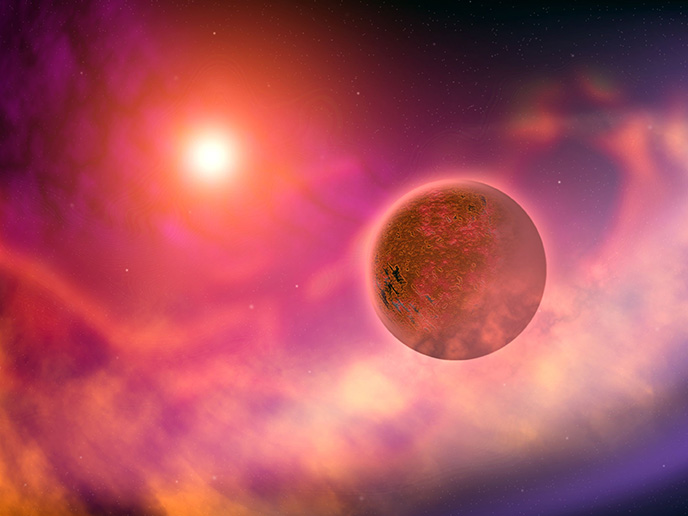Can planets beyond the solar system support life? Numerical models tell us
“We strongly suspect that these super-Earths are rocky and made mostly of oxygen, silicon, magnesium, iron and nickel,” says François Soubiran, a Marie Skłodowska-Curie fellow, undertaking research at France’s École Normale Supérieure of Lyon under the supervision of Razvan Caracas as part of the EU-funded ABISSE project. “On average, almost every star has a super-Earth, which means they are very common and we might find life on one or more of them.” However, little is known about these giant-size versions of Earth.
Can super-Earths generate life-saving magnetic fields?
Using sophisticated numerical simulations, ABISSE is characterising the properties of materials inside a super-Earth and determining if such properties can lead to the production of magnetic fields. “For a planet to produce a magnetic field, it needs to have a conducting fluid in a convective motion – the convection is what happens when you heat up water in a pan,” Soubiran explains. Inside Earth, the magnetic field is produced by a portion of the iron core that is in a liquid state. “Inside super-Earths, the iron core may very well be fully crystallised, making a dynamo process impossible there.” ABISSE is committed to finding where such a process could occur. Project partners have made considerable progress on two aspects. The first concerns the mantle – a region of the Earth’s interior between the crust and core. It had been suggested that molten silicates electrically conduct, and that an enrichment in iron could also significantly increase conductivity. They worked together with two experimental teams to provide numerical support in analysing the data. These experiments investigated the properties of silicates with and without iron under very high pressures. “Preliminary results allow us to conclude that super-Earths’ deep magma oceans conduct enough for a dynamo process,” says Soubiran.
Probing the mysterious depths of super-Earths
The second key finding raises several questions. The ABISSE team discovered that nickel and iron do not mix well together at high pressure. Calculations show that the two also tend to separate at low temperature, primarily because of magnetic effects. The team is not yet aware how temperature will influence behaviour. One hypothesis is that the cores of super-Earths will be separated in iron- and nickel-rich sections. “This is a completely new idea that needs to be thoroughly examined,” he adds. Researchers are currently working with modellers to implement the results of the calculations in their models. In doing so, they will be able to determine the key parameters in characterising these exoplanets and finding the right conditions for habitability. “Many of the soon-to-be-discovered planets are super-Earths, and the challenge of finding life urges us to characterise them as best we can,” concludes Soubiran. “Numerical simulations are a great tool to understand these planetary objects that we can’t explore directly – yet.” This research was undertaken with the support of the Marie Skłodowska-Curie programme.
Keywords
ABISSE, super-Earth, planet, magnetic field, solar system, exoplanet, dynamo process






